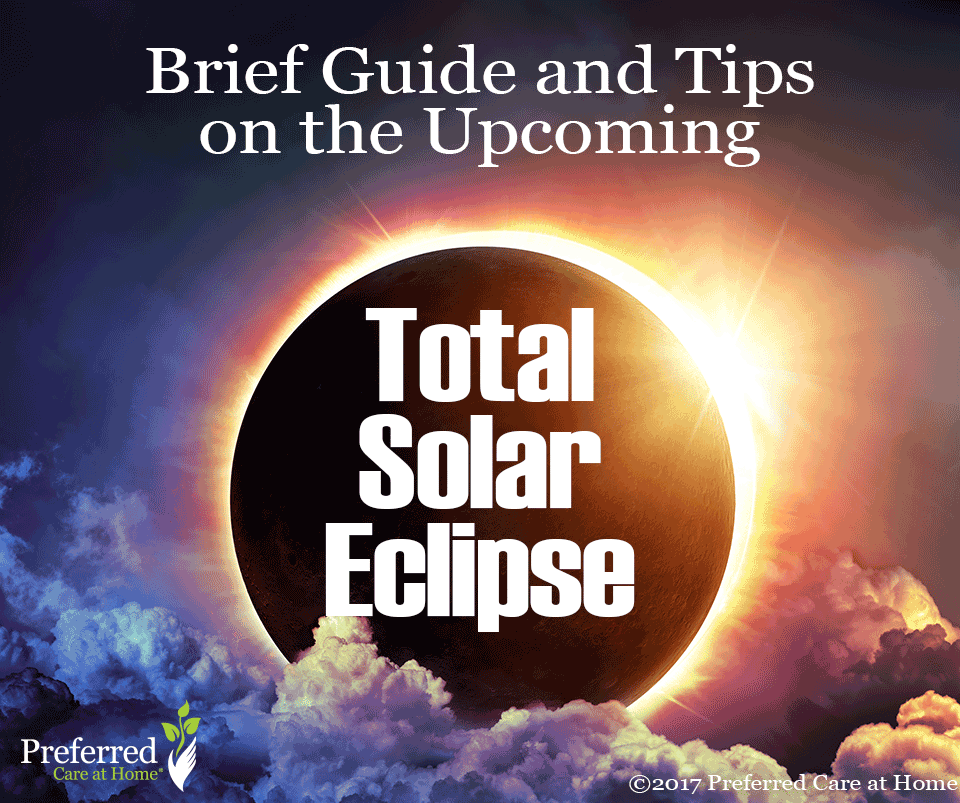Brief Guide and Tips on the Upcoming Total Solar Eclipse
Published August 21, 2017 by Ashly Luckose, Esq. in Holiday

Everyone’s talking eclipse, and a lot of cosmological terms are being thrown around lately. Here’s a brief overview of what you need to know!
“For a little under three minutes, the forces of darkness ruled in daylight as a great swath of shadow up to 190 miles wide cut across the continent…”.
That’s not a line from last (or any) week’s episode of Game of Thrones. That was actually Walter Cronkite describing the last total solar eclipse over the contiguous 48 United States.
That was way back on February 26, 1979. This month, specifically Monday the 21, marks the latest total solar eclipse that’s visible from America.
Everyone’s talking eclipse, and a lot of cosmological terms are being thrown around lately.
And if you’re like me, you have probably just been nodding along as your newsmen, friends, neighbors, and countrymen go on and on about solar and lunar eclipses and the difference between annular and total solar ones.
(Maybe as they were talking, you get a sudden jolt of déjà vu – didn’t something like this just happen? Some sort of rare eclipse? What was that then?)
Well, I took the time to answer our shared doubts and concerns.
First, the important stuff:
- A total solar eclipse occurs when the Moon travels between the Sun and Earth and it blocks out the Sun’s light almost entirely. This is the August 17 eclipse.
- An annular solar eclipse is when the Moon comes in between, and is exactly in line with the Earth, but its size from our perspective looks much smaller than the Sun, making more of the Sun visible behind the dark disk of the Moon. The visible part of the Sun looks like a bright, golden ring (or annulus, which is where you get the name from).
- A partial solar eclipse is similar to an annular one, except the Moon and the Earth are not in line with one another, so you end up with beautiful crescent shaped moments like this.
And that brings us to an eclipse that took place this year, not too long ago. It wasn’t a solar eclipse. It was a lunar eclipse!
In a lunar eclipse, the Earth comes in between the Sun and Moon.
A particularly interesting version of the lunar eclipse is what’s colloquially known as the Blood Moon. When the Earth’s shadow (or umbra) falls on the moon, it turns the Moon a shade of red. It’s a sight to behold, and it’s carried a ton of significance in history to cultures the world across.
A final word of warning on solar eclipses: don’t stare at it without wearing special eclipse glasses! It’s like staring at the Sun on a non-eclipse day, but with your eye’s natural defense mechanisms against the super brightness, such as pupil contractions and blinking, put on super low alert.
Plus, your Rayban’s or Oakley’s won’t do, as they do not have strong enough filters to protect your eyes. And it won’t matter that you only look at it briefly — much like stepping on lava briefly — time really isn’t a factor here. You can do some real damage to your eyes.
Finally, and most importantly, go have fun playing peekaboo with the Sun!
If you have questions about senior home
care services or if you want to start care:
Related Posts

October 24, 2024
The Cutest Extortion Scheme: How Trick-or-Treaters Can Help Kids Worldwide
Ashly Luckose, Esq.

June 26, 2023
Maintaining Independence with Preferred Care at Home | Quality Senior Care
Gina Farmer

June 21, 2023
Celebrating the Strength and Love of Dads
Gina Farmer
Helping seniors age in place, with dignity & grace.